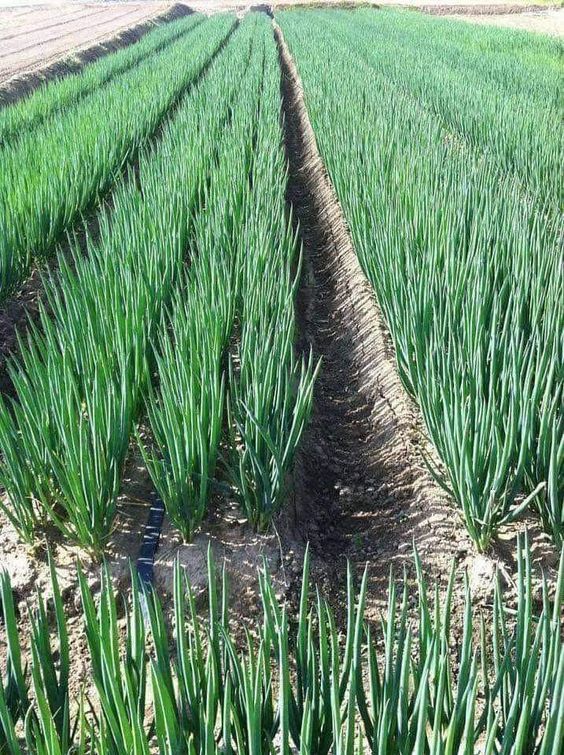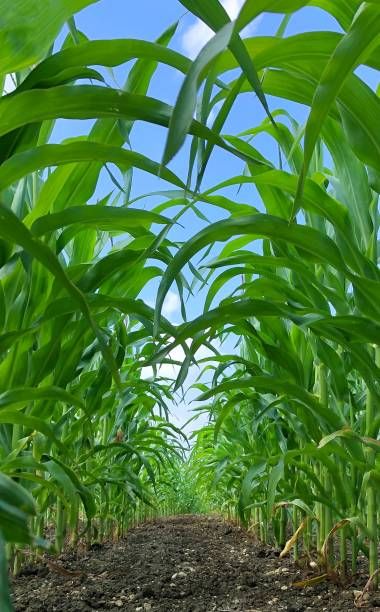Onion Industry Revolutionized: Smart Agriculture’s Impact
Onion Industry, a staple in global cuisine, is a significant agricultural commodity. Traditionally, onion cultivation has been labor-intensive and reliant on weather conditions. However, the advent of smart agriculture is transforming this sector, offering innovative solutions to enhance yield, quality, and sustainability. By integrating advanced technologies such as IoT, AI, data analytics, and precision agriculture, farmers can optimize their onion production processes, mitigate risks, and increase profitability.
Contents
- 1 The Challenges Facing the Onion Industry
- 2 Smart Agriculture: A Game-Changer
- 3 Implementation of Smart Agriculture in the Onion Industry
- 4 The Economic Impact of Smart Agriculture on the Onion Industry
- 5 Policy Recommendations for Promoting Smart Agriculture in the Onion Industry
- 6 Future Trends in Smart Agriculture for Onions
The Challenges Facing the Onion Industry
The onion industry faces numerous challenges, including:
- Weather dependency: Onion growth is heavily influenced by climatic factors, with unpredictable weather patterns leading to yield fluctuations.
- Pests and diseases: Various pests and diseases can significantly impact onion crops, resulting in substantial losses.
- Labor shortages: The industry often faces labor shortages, particularly during peak harvesting periods.
- Market volatility: Onion prices fluctuate due to factors like supply and demand, making it challenging for farmers to plan and manage their operations.
Smart Agriculture: A Game-Changer
Smart agriculture offers a comprehensive approach to addressing these challenges. By leveraging cutting-edge technologies, farmers can gain greater control over their onion production processes.
Key components of smart agriculture for the onion industry:
- IoT (Internet of Things): IoT sensors can be deployed throughout the onion fields to collect data on soil moisture, temperature, humidity, and other environmental factors. This data can be used to monitor crop health, optimize irrigation, and detect early signs of pests and diseases.
- AI (Artificial Intelligence): AI algorithms can analyze vast amounts of data collected from IoT sensors to identify patterns and trends. This information can be used to predict crop yields, optimize planting and harvesting schedules, and develop effective pest management strategies.
- Data Analytics: By harnessing the power of data analytics, farmers can gain valuable insights into their onion production operations. This includes identifying areas for improvement, optimizing resource utilization, and making data-driven decisions.
- Precision Agriculture: Precision agriculture involves using technology to apply inputs such as water, fertilizers, and pesticides precisely where and when they are needed. This approach helps to reduce costs, minimize environmental impact, and improve crop quality.
Benefits of Smart Agriculture in Onion Cultivation
- Increased yield: By optimizing growing conditions and preventing crop losses, smart agriculture can significantly boost onion yields.
- Improved quality: Through precise control over irrigation, fertilization, and pest management, farmers can produce onions with higher quality standards.
- Reduced costs: Smart agriculture can help to reduce costs by optimizing resource utilization and minimizing waste.
- Enhanced sustainability: By using data-driven approaches, farmers can adopt more sustainable practices, such as reducing water and pesticide use.
- Risk mitigation: Smart agriculture can help farmers to mitigate risks associated with weather fluctuations, pests, and diseases.
- Market competitiveness: By improving yield, quality, and efficiency, onion farmers can become more competitive in the global market.
Implementation of Smart Agriculture in the Onion Industry
To successfully implement smart agriculture in the onion industry, several steps are essential:
- Needs assessment: Identify the specific challenges and opportunities faced by onion farmers in a particular region.
- Technology selection: Choose the appropriate technologies based on the identified needs and budget constraints.
- Data collection: Establish a robust data collection system using IoT sensors and other devices.
- Data analysis: Develop AI-powered models to analyze the collected data and generate actionable insights.
- Precision agriculture implementation: Implement precision agriculture practices based on data-driven recommendations.
- Farmer training: Provide comprehensive training to farmers on the use of smart agriculture technologies.
- Infrastructure development: Ensure adequate infrastructure, including reliable internet connectivity, is in place.
The Economic Impact of Smart Agriculture on the Onion Industry
The adoption of smart agriculture technologies has the potential to significantly impact the economic landscape of the onion industry. By increasing yield, improving quality, and reducing costs, farmers can enhance their profitability and overall economic well-being.
- Increased Farmer Income: Higher yields and improved product quality translate to higher market prices, resulting in increased income for onion farmers.
- Job Creation: The implementation of smart agriculture systems requires skilled labor for installation, maintenance, and data analysis, leading to job creation in rural areas.
- Economic Growth: A thriving onion industry contributes to regional and national economic growth by generating revenue, supporting related industries, and creating employment opportunities.
- Export Potential: Improved onion quality and production efficiency can enhance export potential, leading to increased foreign exchange earnings.
Policy Recommendations for Promoting Smart Agriculture in the Onion Industry
To fully realize the benefits of smart agriculture in the onion industry, supportive policies are essential.
- Government Incentives: Governments can provide financial incentives such as subsidies, tax breaks, and grants to encourage farmers to adopt smart agriculture technologies.
- Research and Development: Investment in research and development is crucial for advancing smart agriculture technologies and addressing specific challenges faced by the onion industry.
- Extension Services: Strengthening extension services can help farmers acquire the knowledge and skills necessary to effectively utilize smart agriculture technologies.
- Digital Infrastructure: Governments should prioritize the development of robust digital infrastructure, including reliable internet connectivity, to facilitate data collection and analysis.
- Public-Private Partnerships: Collaborations between government, private sector, and research institutions can accelerate the adoption of smart agriculture and address industry challenges collectively.
Future Trends in Smart Agriculture for Onions
The onion industry is at the cusp of exciting developments driven by technological advancements and changing consumer preferences.
- Precision Breeding: Combining genomics and artificial intelligence, precision breeding can accelerate the development of onion varieties with desired traits such as disease resistance, higher yield, and improved nutritional value.
- Robotics and Automation: The increasing use of robotics and automation in onion cultivation can reduce labor costs, improve efficiency, and enhance food safety.
- Blockchain Technology: Blockchain can be used to track the onion supply chain, ensuring transparency, traceability, and food safety.
- Vertical Farming: Indoor farming systems can enable year-round onion production, reducing reliance on weather conditions and minimizing the environmental footprint.
- Consumer-Driven Agriculture: Understanding consumer preferences through data analytics can help farmers tailor their production to meet specific demands, such as organic or specialty onions.
Smart agriculture is a transformative force in the onion industry, offering the potential to address critical challenges, enhance productivity, and improve sustainability. By embracing innovative technologies, farmers can unlock new opportunities, increase profitability, and contribute to a more resilient and competitive agricultural sector. As the industry continues to evolve, ongoing research, development, and policy support will be essential to fully realize the benefits of smart agriculture for onions.




